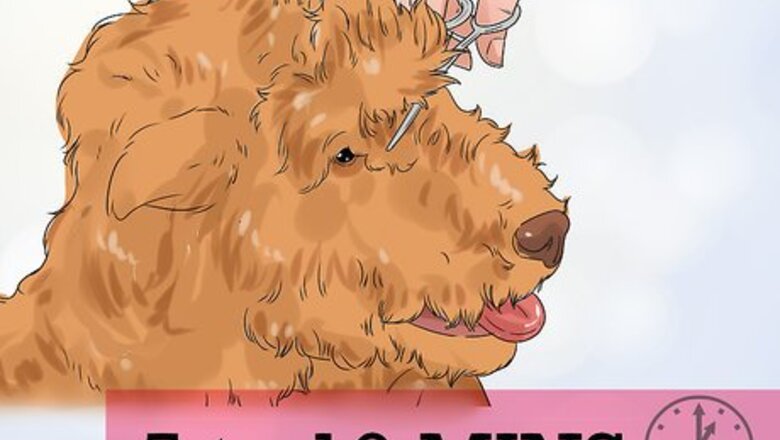
views
X
Research source
If your dog bites while being groomed, you will need to make grooming pleasurable, learn when and how to use a muzzle, and make your dog comfortable with the grooming process.
Making Grooming Pleasurable

Keep grooming sessions short. Long grooming sessions can increase a dog’s stress, fear, or pain, causing it to bite. Make your dog’s grooming sessions short—maybe just 5 to 10 minutes. Don’t worry if you don’t finish all the grooming. You can always come back to it later. If you’d rather do the grooming all at once, give your dog breaks during the grooming session. When you let your dog take a break, let it come back to you when it’s ready.
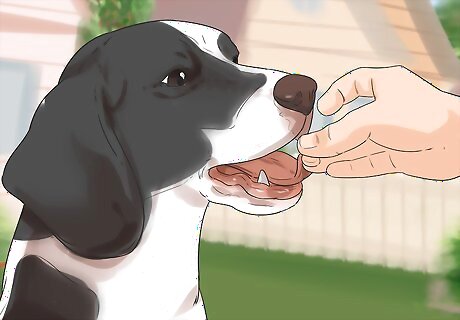
Offer tasty treats. When your dog is behaving well during the grooming session, give it a tasty treat. The treat will help your dog associate grooming with something positive. When your dog recognizes that grooming is a good thing, it won’t feel the need to bite. Give your dog a treat that you’ll use only for grooming.
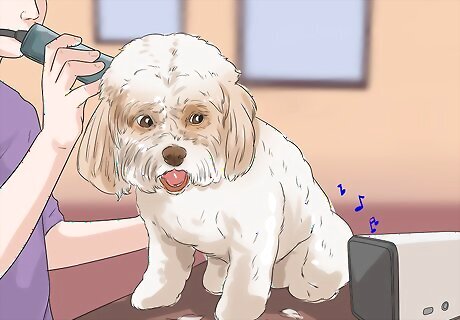
Redirect your dog’s attention. If your dog is focused on everything it doesn’t like about being groomed (nails trimmed, ears cleaned), it may respond by biting. Turning on some soothing music or letting your dog look out the window will allow your dog to focus on something positive and relaxing. You could also talk to your dog throughout the grooming session. Use a soothing voice to put your dog more at ease.
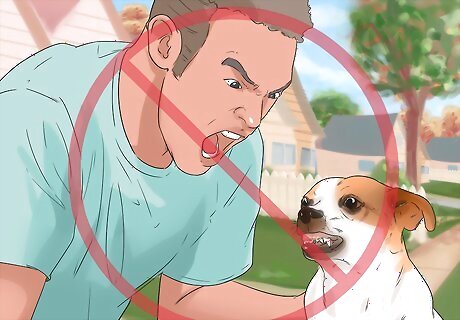
Do not punish your dog when it growls. A growl is a dog’s warning signal that it’s about to bite or attack. If you punish your dog when it growls, you’re taking away its warning signal. Without that warning signal, your dog will bite suddenly, putting you in danger. Rather than punish your dog, stop the grooming session completely or let your dog take a break. Punishing a dog does not improve its behavior.
Using a Muzzle

Talk with your vet. A muzzle will protect you if your dog tries to bite while being groomed. It won’t, however, calm your dog down or help your dog enjoy being groomed. In fact, your dog may become even more difficult to groom if you use the muzzle incorrectly. Before purchasing a muzzle, talk with your vet. Because many types of muzzles are available, you’ll need your vet’s expertise to decide which muzzle to choose and learn how to use it safely. Use the muzzle as a last resort. Try other methods of keeping your dog calm before using the muzzle.
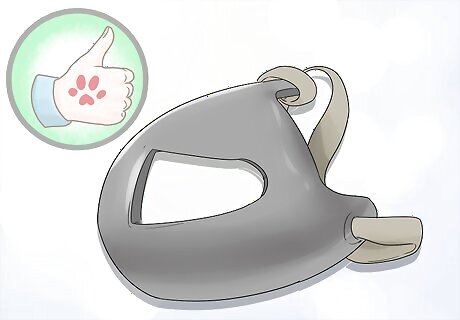
Select a comfortable muzzle. Mesh or fabric muzzles are commonly used for grooming. However, because they don't allow a dog to eat, pant, or drink, they should be used for short periods of time only. A plastic basket muzzle can also be used. Your dog would be able to eat, pant, and drink comfortably with a plastic basket muzzle on. Whichever muzzle type you choose, ensure that it fits your dog comfortably, but snugly. You don’t want it coming off if your dog tries to bite. The strap around the neck should fit snugly. If you choose a basket muzzle, make sure the basket area allows enough room for your dog to eat, pant, and drink. The muzzle’s strap around the neck should fit like your dog’s collar.
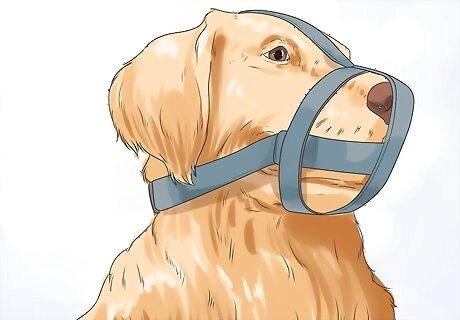
Get your dog comfortable with wearing the muzzle. Your dog isn’t going to be thrilled about wearing a muzzle. However, if it becomes comfortable with it, and gets rewarded while wearing it, you’ll feel much more protected during the grooming process. Here are some tips to get your dog comfortable with the muzzle: In the beginning, reward your dog when it looks at the muzzle. Make the muzzle enticing by putting a tasty treat like peanut butter in the nose part of the muzzle. When you put the muzzle on, leave it on for just a few seconds at first. Then, work up to longer periods of time. Always reward your dog when it has the muzzle on so it associates the muzzle with something positive.
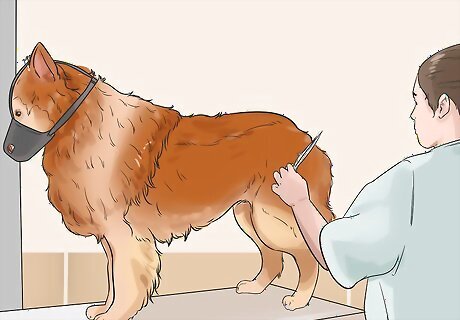
Use the muzzle during grooming. Even though your dog will be comfortable with wearing the muzzle, it won’t want to wear it indefinitely. If you’re using a mesh muzzle, put it on only when you think your dog will bite, such as during a nail trim. For a plastic basket muzzle, put it on right before you begin grooming and take it off as soon as you finish. If your dog is wearing a basket muzzle, give your dog treats while you groom it. If it’s wearing a mesh or fabric muzzle, reward your dog as soon as you remove the muzzle.
Making Your Dog Comfortable
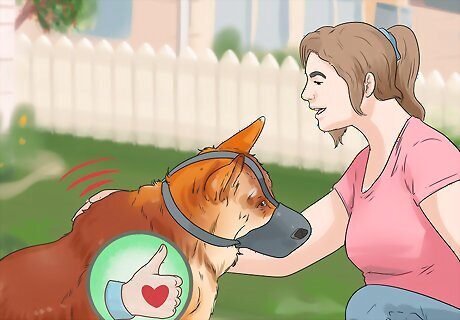
Get your dog comfortable with being touched. Some dogs bite while being groomed because they don’t like certain areas, like their feet, being touched. That bite says ‘Don’t touch me there!’. To get your dog more comfortable with being touched in sensitive areas: Always be gentle and slow when you touch your dog. It will need to know it can trust you and your touch. Watch your body language when you touch sensitive areas. If your dog tenses or growls, move your hand back towards a non-sensitive spot, like its back. Reward your dog when it doesn’t react negatively to being touched in sensitive areas.
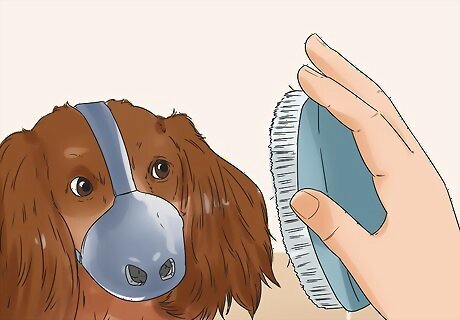
Acclimate your dog to grooming tools. Grooming tools (scissors, loud hair dryers, toothbrushes) can be bewildering and scary to a dog. If your dog isn’t used to the grooming tools, it may bite in self-defense. Before the next grooming session, work with your dog to slowly get it more comfortable with grooming tools. Here are some tips on doing that: Introduce each grooming tool in a non-threatening way, such as by casually placing it on the table. Reward your dog each time it looks at or sniffs the tool. Use the tool on your dog for a few seconds. For example, if it’s a brush, do one gentle sweep down your dog’s back and put the brush away. Use the tool for longer periods of time, rewarding your dog each time it doesn’t get scared.
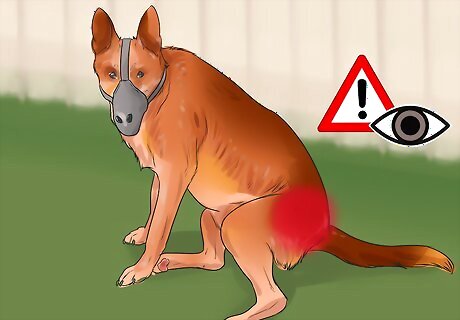
Address painful medical conditions. Your dog is usually standing up when it’s being groomed. If your dog has arthritis or other joint problems, standing up could be very painful. Your dog may bite because it’s in pain. Your dog’s pain will need to be under control before the next grooming session. Take your dog to your vet. They can diagnose the condition and prescribe a pain medication to relieve the pain.
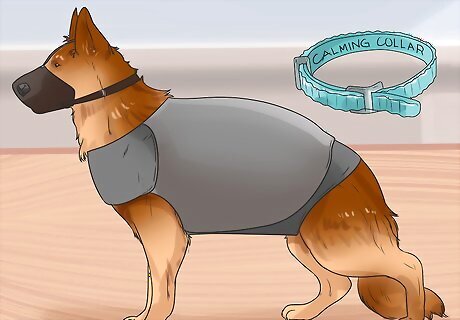
Use natural calming aids. A calm, relaxed dog will be much less likely to bite while being groomed. Fortunately, several calming aids are available for dogs. For example, you can put a Thundershirt® on your dog to calm it down. Collars with calming pheromones (chemical signals) are also available. Rescue Remedy, which is a commercial product containing flower extracts, and lavender are also good calming aids for dogs. Calming aids are available at pet stores, online, and in natural food stores. Talk with your vet before using a calming aid on your dog. Depending on how much your dog detests grooming, it may take a few tries (or more) before the calming aid starts working.










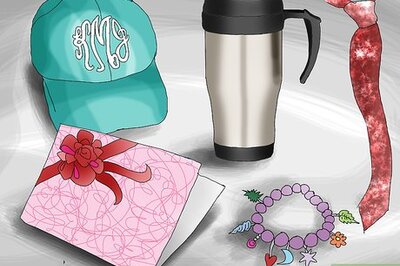




Comments
0 comment